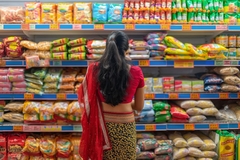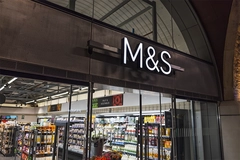
- Industry news
Industry news
- Category news
Category news
- Reports
- Key trends
- Multimedia
- Journal
- Events
- Suppliers
- Home
- Industry news
Industry news
- Category news
Category news
- Reports
- Key trends
- Multimedia
- Events
- Suppliers
Abolition of Milk Quotas Will Create Significant Opportunities

30 Mar 2015 --- This week, the EU milk quotas that were set in 1984 when there was a huge milk and butter surplus, will end. Many farmers and dairy cooperatives are looking forward to the change, which will lift any restriction on how much milk they produce.
However, while some reports suggest an air of excitement and opportunity, the current over production, the Russian import ban and China’s less than enthusiastic imports, as well as a crisis involving milk prices, beg the question of whether anyone will really benefit from being allowed to draw unlimited milk.

A report published by the US Dairy Export Council (USDEC) predicts that milk production will increase by 11% in the years following the quota removal, and that most of this production (76%) will be concentrated in six Northern European countries, namely Ireland, Denmark, Netherlands, France, Poland and Germany. It expects that by 2020, the EU will produce 15.4 million metric tonnes more milk than in 2014.
The study further predicts that much of the production will be processed into commodities such as cheese, with production increasing by 660,000 metric tonnes by 2020. Whey, butter and milk powders are also predicted to increase significantly.
At its introduction, the quota regime was one of the tools used to overcome these structural surpluses. Successive reforms of the EU's Common Agriculture Policy have increased the market-orientation of the sector and, in parallel, provided a range of other, more targeted instruments to help support producers in vulnerable areas, such as mountain areas where the costs of production are higher. The final date to end quotas was first decided in 2003 in order to provide EU producers with more flexibility to respond to growing demand, especially on the world market. It was reconfirmed in 2008 with a range of measures aimed at achieving a "soft landing". Even with quotas, EU dairy exports have increased by 45% in volume and 95% in value in the last 5 years. Market projections indicate that the prospects for further growth remain strong – in particular for added-value products, such as cheese, but also for ingredients used in nutritional, sports and dietary products.
Speaking ahead of the end of the quota regime, EU Commissioner for Agriculture & Rural Development Phil Hogan stated: "The end of the milk quota regime is both a challenge and an opportunity for the Union. It is a challenge because an entire generation of dairy farmers will have to live under completely new circumstances and volatility will surely accompany them along the road. But it certainly is an opportunity in terms of growth and jobs. Through increased focus on valued added products as well as on ingredients for "functional" food, the dairy sector has the potential of being an economic driver for the EU. More vulnerable areas where the end of the quota system may be regarded as a threat can benefit from the pallet of rural development measures following the subsidiarity principle."
Ireland has been very optimistic about quota removal. Irish commentators have suggested that the removal of the quotas may create up to 15,000 jobs and could be worth over €1 billion to the Irish economy. The jobs are likely to arise in milk processing, animal feeds processors and suppliers, agri wholesale and farm advisory roles. In 2011 dairy exports were valued at €2.6 billion, and with the removal of restrictions dairy industry will become one of Ireland’s most valuable export sector.
Northern Europe is set to make the biggest gains from the quota removal. A report published last year by Finnish research group MTT, entitled Competitiveness of Northern European Diary Chains, suggested that the removal of quotas would lead to a concentration of milk production in Northern Europe, creating a ‘milk production belt’.
Furthermore, last month Rabobank published a report, which was covered by FoodIngredientsFirst, in which it analysed how the quota removal would impact Europe in the longterm. Rabobank also believes that production will continue to be concentrated in Northern Europe.
The USDEC report concludes that the majority of the extra production will be exported outside of the EU, with big dairy companies like Germany’s DMK, Friesland Campina and Arla, leading the export focus outside of the EU.










